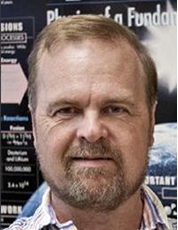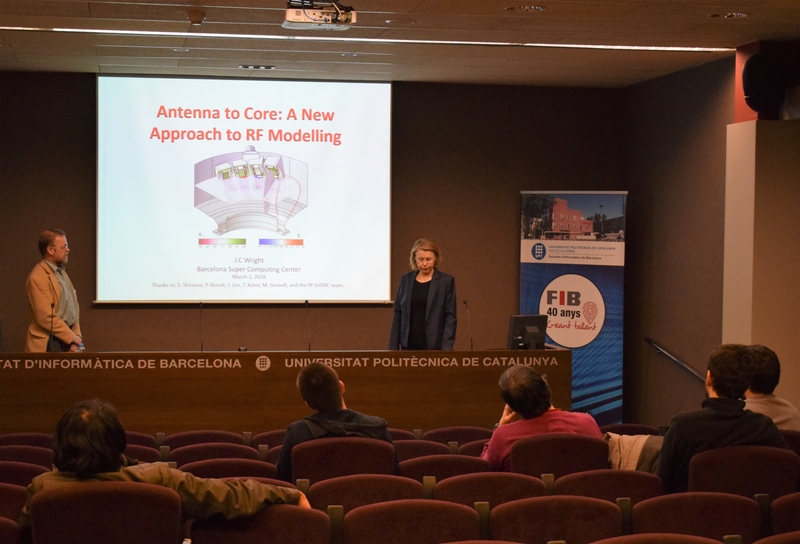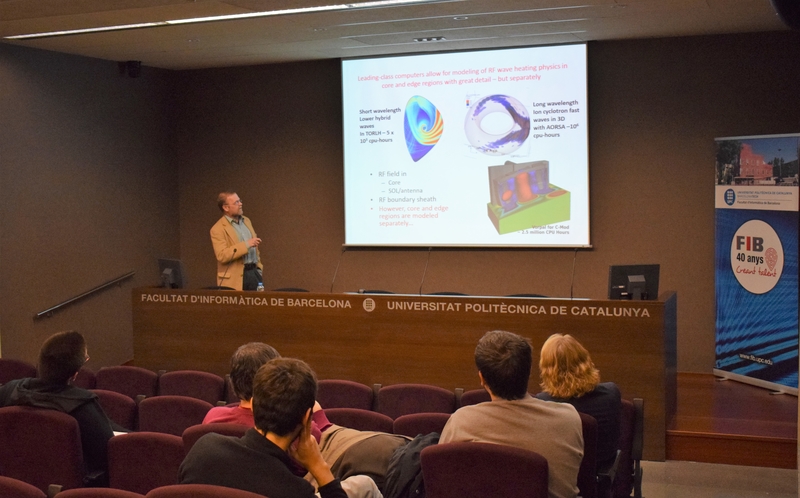Objectives
Click here to download the presentation
Abstract: Heating with radiofrequency (RF) waves is a well-established method in present-day fusion devices for heating fusion fuel to extremely high temperatures of 100-200 million °C. This talk focuses on the modelling of coupling, propagation and absorption of RF waves in fusion devices to achieve these high temperatures. A novel technique for the calculation of RF waves in fusion relevant 3D geometries is presented which enables, for the first time, the simultaneous incorporation of all main physical and engineering aspects, i.e. the antenna geometry, plasma facing components (PFCs), the scrape off-layer (SOL), and core propagation. Calculations with this technique capture wave propagation in the SOL, reflection from the core plasma and wave interactions with non-conforming PFCs. The method combines the finite element approach for the SOL and antenna structure and the spectral method for the hot core using a domain decomposition technique with impedance matching to construct the full solution. Using open source software on leadership class computing platforms have permitted solutions in excess of 30 Million degrees of freedom. Representative examples from applications to experimental devices Alcator C-mod (MIT, USA) and W7X (IPP, Germany) will be shown.
This work has been supported by US DoE Contracts DE-FC02-01ER54648 and DE-FC02-99ER54512.
 Short Bio: After graduating with a B.S. in applied physics in 1991 from Columbia University, John C. Wright received his Doctorate in astrophysics at Princeton University in 1998 for a thesis titled, “Fast Wave Current Drive Modeling in Tokamaks.” He then moved to the plasma physics group at the University of Wisconsin-Madison to work on magnetohydrodynamic modeling with emphasis on current drive techniques. Thereafter, he returned to radio frequency (RF) research with a position in the Plasma Science and Fusion Center (PSFC) at MIT where he continues to work today as a Principal Scientist. His present work at the PSFC focuses on applying advanced parallel RF models to experimental and theoretical RF issues. A recent focus includes applying database and graph technologies to managing data and process from experiments and simulations to include provenance and annotation. He continues to be involved in several international and multi-institutional domestic collaborations focusing on various modeling integration and algorithm development issues in RF modeling.
Short Bio: After graduating with a B.S. in applied physics in 1991 from Columbia University, John C. Wright received his Doctorate in astrophysics at Princeton University in 1998 for a thesis titled, “Fast Wave Current Drive Modeling in Tokamaks.” He then moved to the plasma physics group at the University of Wisconsin-Madison to work on magnetohydrodynamic modeling with emphasis on current drive techniques. Thereafter, he returned to radio frequency (RF) research with a position in the Plasma Science and Fusion Center (PSFC) at MIT where he continues to work today as a Principal Scientist. His present work at the PSFC focuses on applying advanced parallel RF models to experimental and theoretical RF issues. A recent focus includes applying database and graph technologies to managing data and process from experiments and simulations to include provenance and annotation. He continues to be involved in several international and multi-institutional domestic collaborations focusing on various modeling integration and algorithm development issues in RF modeling.


